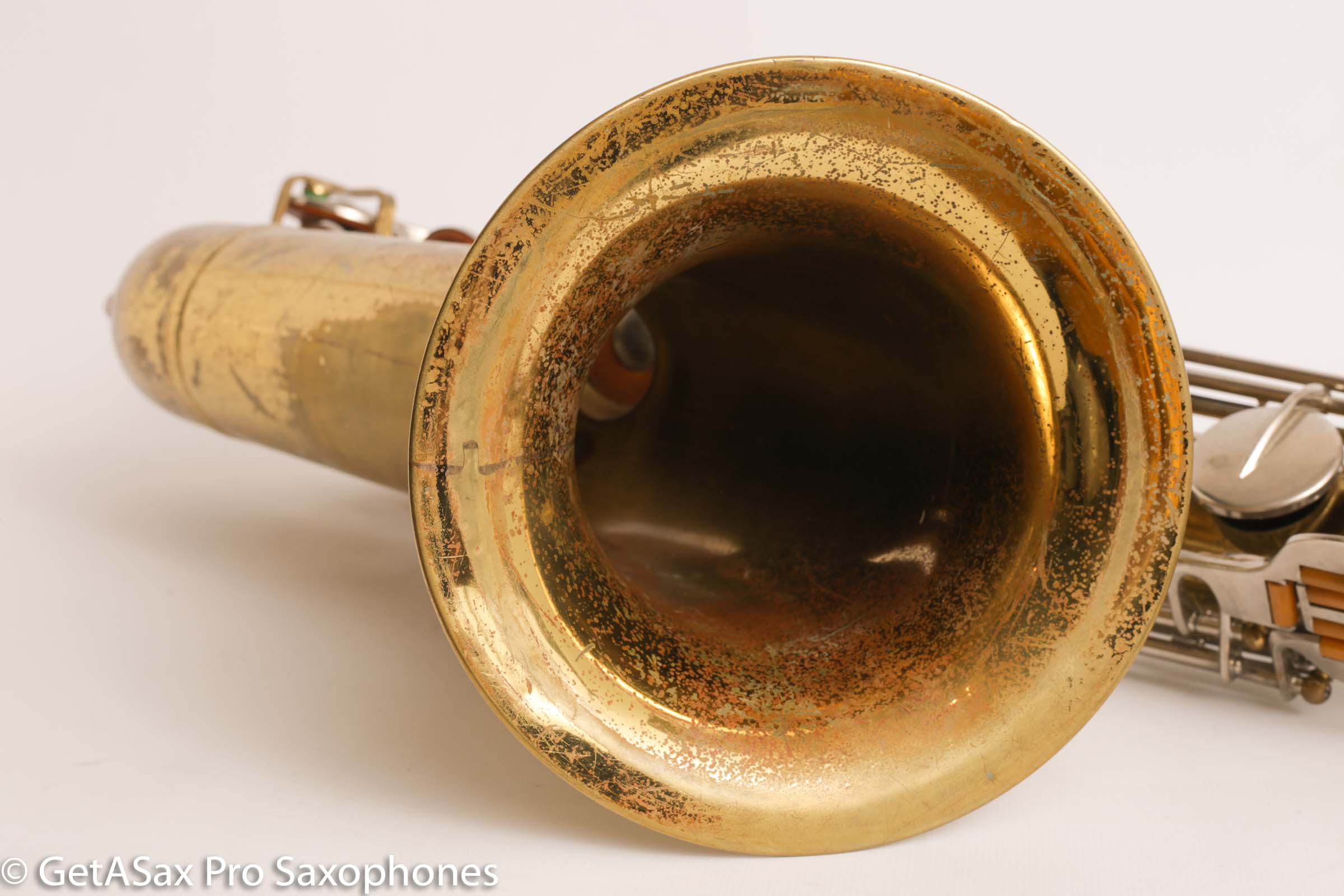
My relative had played both instruments in 1917 I was told, and they'd been in a trunk in a basement in Aberdeen, WA with all the pads rotted away and also with the metal covered with corrosion when I got them. The soprano was one with the brand name HARWOOD, and I was told it was actually a Buescher and that many horns from this era ended up with the name of the music store they were sold at on the bell, instead of the manufacturer's. There were only two left hand palm keys and two right hand side keys. I'd seemed to alienate my pater by my radical political outlook and he'd forced me to take the sopranino with me from the family home along with all of the rest of my possessions literally carrying everything I owned on my back, or as in the case of the sopranino, in my hand in a case of black walnut my grandfather had made for it.I used to tell people my grandparents had been great fans of Charlie Parker's most famous sideman Mitch Miller.who liked to sing along following the bouncing ball-how arcane and archiac even! It was exceptionally beautiful with a light colored laquer and looked like a brand new horn and Pittel's jaw visibley dropped when I pulled it out to show it to him while I'd been taping him for KAOS-FM radio at Evergreen College in Olympia. I never mastered making my own reeds for it and had so-so luck playing the instrument myself, and unfortunately ended up selling it to the alto player in THE OWENS BROTHERS BAND at the Sheraton Inn in Spokane, a black guy just out of a military band, for $100 the winter of '78 or '79 when I was hitch hiking through town from the other side of the state and there was a foot of ice and snow on the ground and I needed the money to spend a night in a skid row hotel.before I discovered rescue missions. Harvey Pittel played my Buescher sopranino not long after the Selmer company had made a sopranino especially for him, the first sopranino made in the world in 40 years at that time (circa '73) and he said my horn played better than all of the sopraninos made by Selmer his students had bought after his, and as well as his own horn. He recommended against a job as an instrument repairman, citing his emphasima from buffing innumerable trombone bells, etcetera.I'd attended North Texas State University the '70-'71 school year, attracted by the jazz reputation and the amazingly low tuition-less as an out of state student than I'd of paid as a resident in Washington state-though in Texas there was the possibility of getting a life prison sentence for a first criminal offense if you got caught in possession of even a single "joint" cigarette of marijuana and which actually happened to a black man there around that time who is still serving his sentence-not a student or anyone I knew though he has become a little famous even.I doubt if many out of state musicians at NTSU even knew of this potentiality and/or everyone acted as if they didn't.


Howard Ward of Covert Music in Fort Worth restored the sopranino for $39.95 that I'd hitch hiked from the Seattle area to bring to him in '71 or '72. I have also had five other Bueschers, begining with a soprano and sopranino that were a relative's. I've had six Bueschers currently an alto made in 1929 that I'm getting ready to try to overhaul myself using the Dutch TopTone rubber pads that I've never seen before, but that were recommended from a link at Bert Wilson's website and sell for a hundred dollars a set, including glue and instructions (I bought a Yamaha YAS-23 I enjoy alot for $450 in 2003, which except for its stiffer action is amazingly remniscent by its feel in my hands of a top of the line '67 Buffet alto I had for six months in high school but couldn't keep up the payments on-I was learning things on the Yamaha I would then teach myself to do on the old Buescher.I've also had a pristine early Mark VI alto #83038 and a very nice Super 20 alto with a silver neck.

I just noticed this forum while looking for someplace to find information about an "Elkhart by Buescher" alto I just saw for sale in a local music store, for $325.(when were they made, etcetera?) The neck is slightly ovalised from having once been bent, and I'm wondering if this can be corrected and/or even if an aftermarket reinforcement can be added? (so many older altos that would otherwise be fine horns seem to've been damaged thusly, and I would think someone would've gotten into reinforcing them when in a repair shop.though I've never seen this done.you'd think the neck would be liable to further bending more so than usual, after being once damaged-even if repaired well enough to make the tube round again.


 0 kommentar(er)
0 kommentar(er)
